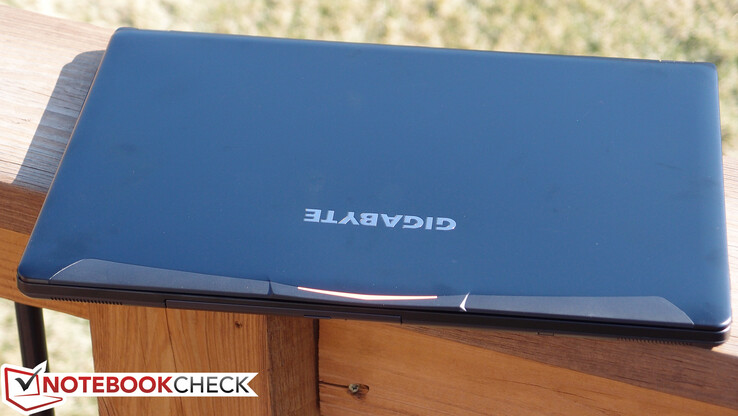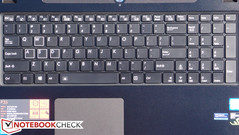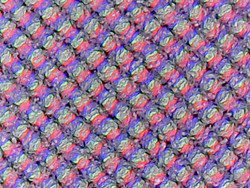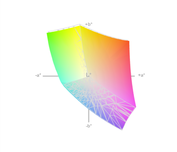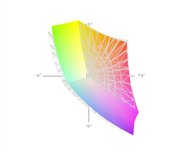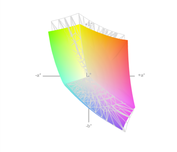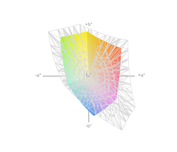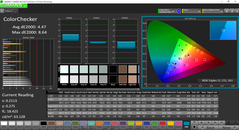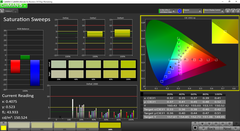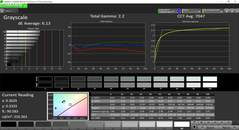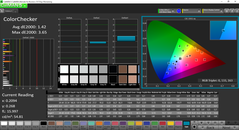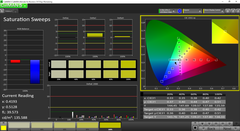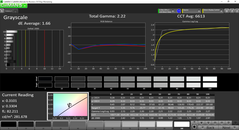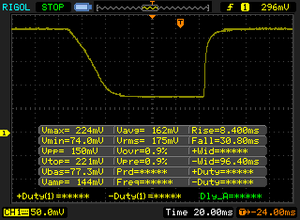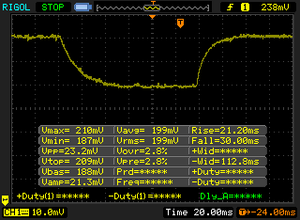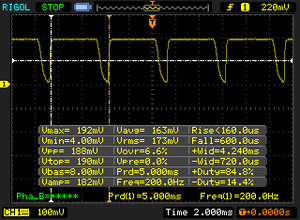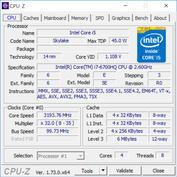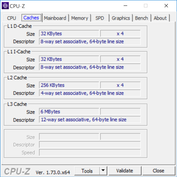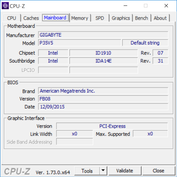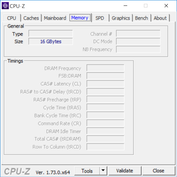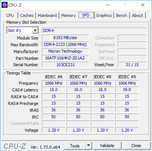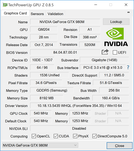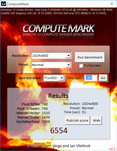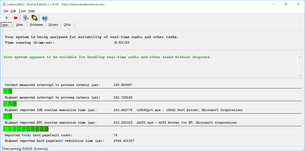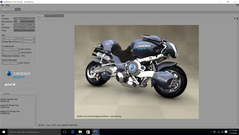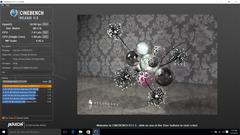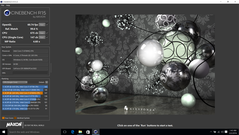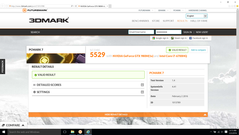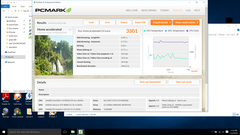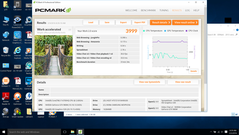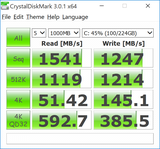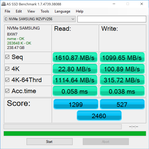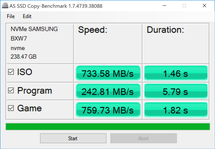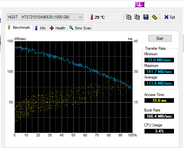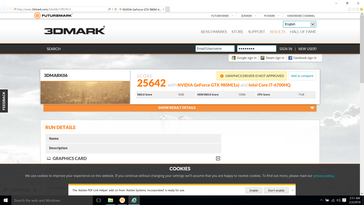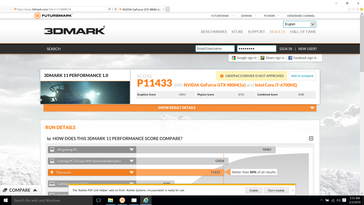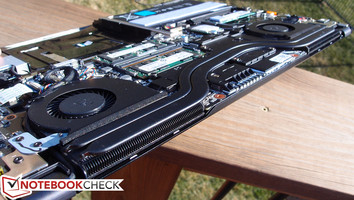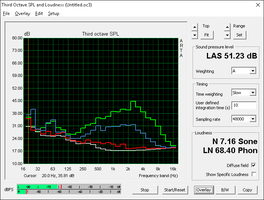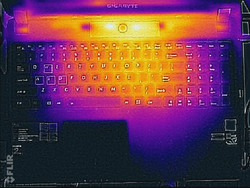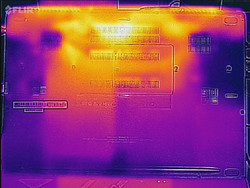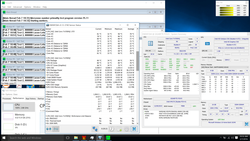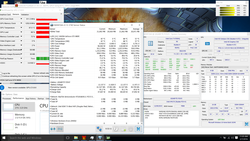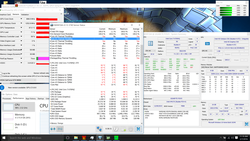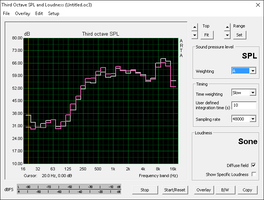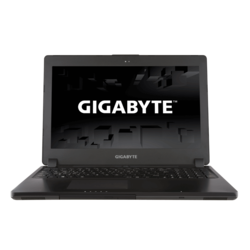Gigabyte P35X v5 Notebook Review

A little over a year after our review of the Gigabyte P35X v3, we’ve now got the coveted v5 in our hands, and while it’s predominantly what would qualify as a chipset refresh, it does bring a handful of enticing enhancements to the table. For starters, while the P35X v3 already packed the unprecedented power of the NVIDIA GeForce GTX 980M GPU, the P35X v5 now pairs it with a comparably dominant CPU—a Core i7-6700HQ—leveraging the notable efficiency advancements of the Skylake architecture (as compared to the v3’s Haswell chipset), which includes support for DDR4 memory (our system flaunts 16 GB of it). The primary storage has also seen a boost to an NVMe SSD, and the IPS screen is now a super-dense 3840x2160 resolution 4K panel. Finally, some other random changes have been made, such as the addition of a USB 3.1 Type-C port.
So while not much has changed in terms of the overall design, the components have undergone a significant upgrade. All of this adds up to a price tag (for our review configuration) of around $2,300 (with cheaper options, forgoing the SSD and QHD screen, coming in at $1,800). But considering the fact that this is potentially one of the most powerful gaming notebooks available, isn’t that worth a look? Let’s find out.
Case
Although it’s been quite a while since our last P35X review, not much has changed on the casing, so we won’t spend a great deal of time reiterating what we previously concluded here. The same applies to other common items, too, such as the input devices, which are practically identical to those of their predecessor. Nevertheless, we’ll summarize our renewed thoughts in the context of modern gaming competitors.
Most manufacturers of gaming notebooks have sacrificed the allure of a fully-metal chassis (such as one might see in a high-end Ultrabook or business notebook) for the practicality of metal-plastic hybrid construction. Whereas in other market segments, metal makes more sense, in gaming notebooks, the benefits in terms of weight and cost alike render a hybrid approach sensible and difficult to criticize. This is especially true when the case tactfully flaunts its metal where it counts, and the 2.64 kg, 21 mm thin Gigabyte P35X v5 accomplishes this well enough. Most of the display lid, as well as the entire top side of the base unit (including the palm rest) are constructed from aluminum, which lends a high-quality feel and probably an improved dissipation of heat. The bottom cover, meanwhile, which wraps around to meet the underside of the machine’s ports on the edges, is plastic—albeit, a seemingly higher-grade selection of the material.
Haptically, the choice of construction materials is nice, and in terms of stability, the base unit is mostly rock-solid, with hardly any flex to speak of (the ultra-thin display lid is somewhat less reassuring, but when closed it seems armored enough). It’s the general appearance of the P35X which continues to belie its classification; while the Alienware 15 R2, ASUS ROG machines, and Acer Predator 15 are busy extolling the virtues of their multicolored lights and chiseled angles, the P35X more closely resembles a large business notebook, with hardly any flair whatsoever and a matte black surface devoid of any illumination apart from the keyboard backlighting. There’s nothing wrong with this approach, per se… while some might declare it boring, it’s akin to a well-constructed home without the architectural flair and decorative flavor of detailed trim and expensive paintings. It works if you don’t mind the understatement.
Connectivity
Port selection is at first glance nearly identical to that of the P35X v3 as well, except now, USB 2.0 is history, with three USB 3.0 ports and one USB 3.1 Type-C port lining the edges. The only other major difference is HDMI 2.0 capability, which offers output of 4K resolution video with 12-bit color at 60 Hz (when connected to an HDCP 2.2 compatible display).
Spacing and organization of the ports isn’t an issue, though the front-mounted optical drive bay is a bit jarring until you get used to it. That is, if you ever use the optical drive—and if you don’t, the swappable slot allows for either a weight saver dummy insert or a fourth HDD/SSD for those with extreme storage aspirations.
Communication
The Gigabyte P35X v5 features an Intel Dual Band Wireless-AC 8260 adapter, which supports transfer rates of up to 867 Mbps and integrated Bluetooth 4.1 support. Also on board is Realtek PCIe Gigabit Ethernet. We experienced no network connectivity issues during our time with the device.
Accessories
The included 200 W adapter is predictably massive, but it does the job. Apart from that, Gigabyte goes above and beyond by including the swappable HDD/dummy bay adapter for the optical drive slot (an adapter which, when swapped for the optical drive, will save you 98 grams of weight). Bravo!
Software
Gigabyte provides a few different value-added software items, including LAN Optimizer, Smart Update, Smart USB Backup, and Smart Manager. The most relevant of these to gamers will be Smart Manager, which provides quick access to and easy manipulation of an array of system settings, including fan speed controls to tune the performance, heat, and noise level of the notebook depending on your current preferences.
Maintenance
Maintenance on the P35X remains a bit of a chore thanks to fifteen screws—of four different types—securing the bottom panel, along with a series of perimeter clips. The approach certainly provides stability (as we covered in our Case section), but the array of screws is excessive in light of the notebook’s class as an enthusiast device. Gigabyte even seems to encourage user upgrades and customizations in its literature; at the very least, they could have sized all of the screws identically or marked them for convenience.
Warranty
Gigabyte provides a 2-year limited warranty with the P35X v5.
Input Devices
Keyboard
The P35X’s keyboard remains the same, and as such, the same complaints apply. While the keys are comfortably sized and quiet, the short stroke is muted with a mushy, rather ambiguous sense of feedback. Quickly typing resulted in frequent errors in our testing, which suggests the keyboard will likely require some adjustment. In our judgment, it is bested by most other competing gaming notebooks and even by most Ultrabooks, whose slim profiles nonetheless inflict the same sort of geometric challenges upon their manufacturers. On a positive note, at least the backlighting is well implemented, and it’s not adjustable to two brightness levels, or can be set to auto-adjust based on ambient lighting.
Touchpad
The ELAN touchpad, unfortunately, is equivalently pedestrian—which seems to be a regression from the previous models (unless it is merely an aberration specific to our unit). Whereas it is certainly large enough to accommodate the breadth of the screen’s real estate, there is a perceptible pointer lag in play, and the integrated buttons provide very little feedback and not much travel. We tried multiple drivers and were nevertheless met with no resolution.
Display
While “lower end” 1080p resolution panels are still available, the Gigabyte P35X ups the ante once again with a true 4K IPS display panel in its higher-end configurations. Our review unit shipped with a 15.6-inch, matte 4K (3840x2160) resolution Sharp SHP144E IPS panel. This derives to a PPI of 282, which looks good with the improved scaling of the Windows 10 operating system. Subjectively, the panel seems to have good color reproduction and reasonable brightness.
| |||||||||||||||||||||||||
Brightness Distribution: 80 %
Center on Battery: 278.9 cd/m²
Contrast: 496:1 (Black: 0.562 cd/m²)
ΔE ColorChecker Calman: 4.47 | ∀{0.5-29.43 Ø4.79}
ΔE Greyscale Calman: 6.13 | ∀{0.09-98 Ø5}
95.43% sRGB (Argyll 1.6.3 3D)
60.87% AdobeRGB 1998 (Argyll 1.6.3 3D)
66.9% AdobeRGB 1998 (Argyll 3D)
95.8% sRGB (Argyll 3D)
64.8% Display P3 (Argyll 3D)
Gamma: 2.2
CCT: 7047 K
| Gigabyte P35X v5 15.6", 3840x2160 | Gigabyte P35X v3 15.6", 2880x1620 | Acer Predator 15 G9-591-74ZV 15.6", 1920x1080 | Alienware 15 R2 (Skylake) 15.6", 1920x1080 | Schenker XMG U506 15.6", 1920x1080 | |
|---|---|---|---|---|---|
| Display | -8% | -5% | -38% | -8% | |
| Display P3 Coverage (%) | 64.8 | 61.7 -5% | 66 2% | 40.3 -38% | 63.8 -2% |
| sRGB Coverage (%) | 95.8 | 85.1 -11% | 85.8 -10% | 60.2 -37% | 83.4 -13% |
| AdobeRGB 1998 Coverage (%) | 66.9 | 61.7 -8% | 62.7 -6% | 41.67 -38% | 61 -9% |
| Response Times | 38% | 17% | |||
| Response Time Grey 50% / Grey 80% * (ms) | 51.2 ? | 31 ? 39% | 48.8 ? 5% | ||
| Response Time Black / White * (ms) | 39.2 ? | 25 ? 36% | 28 ? 29% | ||
| PWM Frequency (Hz) | 200 ? | 200 ? | |||
| Screen | 23% | 21% | -4% | 7% | |
| Brightness middle (cd/m²) | 278.9 | 374 34% | 310 11% | 180 -35% | 298 7% |
| Brightness (cd/m²) | 272 | 350 29% | 287 6% | 179 -34% | 276 1% |
| Brightness Distribution (%) | 80 | 90 13% | 86 8% | 83 4% | 85 6% |
| Black Level * (cd/m²) | 0.562 | 0.45 20% | 0.36 36% | 0.19 66% | 0.42 25% |
| Contrast (:1) | 496 | 831 68% | 861 74% | 947 91% | 710 43% |
| Colorchecker dE 2000 * | 4.47 | 4.25 5% | 3.83 14% | 6.74 -51% | 5.26 -18% |
| Colorchecker dE 2000 max. * | 8.64 | ||||
| Greyscale dE 2000 * | 6.13 | 4.9 20% | 2.53 59% | 6.44 -5% | 5 18% |
| Gamma | 2.2 100% | 2.36 93% | 2.42 91% | 2.29 96% | 2.46 89% |
| CCT | 7047 92% | 6294 103% | 6934 94% | 6465 101% | 6965 93% |
| Color Space (Percent of AdobeRGB 1998) (%) | 60.87 | 56 -8% | 56 -8% | 38 -38% | 55 -10% |
| Color Space (Percent of sRGB) (%) | 95.43 | 86 -10% | 60 -37% | 83 -13% | |
| Total Average (Program / Settings) | 8% /
14% | 18% /
18% | -8% /
-8% | -1% /
3% |
* ... smaller is better
Our measurements yield an average brightness of 271.9 cd/m² and a distribution of 80%, both of which are decent, but not great. The same applies to the contrast ratio of just 496:1, fueled by a rather high black level of 0.562 cd/m².
Color gamut is a different story entirely however. We measured a 95% coverage of the sRGB spectrum, and 61% of AdobeRGB. These numbers are very good—ahead of those of the rest of the field in our assortment of closest competitors (all of which, in their defense, are of configurations which feature “lowly” 1080p panels). As such, colors appear nonetheless vivid in spite of the uninspiring brightness and contrast attributes.
CalMAN pre-calibration measurements reveal no unforgivable transgressions; with Grayscale and ColorChecker DeltaE averages of 6.13 and 4.47 (ideal: 0), respectively, the color deviations are only somewhat noticeable to the naked eye. Post-calibration, these deviations all but evaporated with averages of 1.66 and 1.42, respectively. Meanwhile, a Total Gamma of 2.2 and CCT Average of 7047 out of the box are quite good overall.
Display Response Times
| ↔ Response Time Black to White | ||
|---|---|---|
| 39.2 ms ... rise ↗ and fall ↘ combined | ↗ 8.4 ms rise | |
| ↘ 30.8 ms fall | ||
| The screen shows slow response rates in our tests and will be unsatisfactory for gamers. In comparison, all tested devices range from 0.1 (minimum) to 240 (maximum) ms. » 97 % of all devices are better. This means that the measured response time is worse than the average of all tested devices (20.3 ms). | ||
| ↔ Response Time 50% Grey to 80% Grey | ||
| 51.2 ms ... rise ↗ and fall ↘ combined | ↗ 21.2 ms rise | |
| ↘ 30 ms fall | ||
| The screen shows slow response rates in our tests and will be unsatisfactory for gamers. In comparison, all tested devices range from 0.165 (minimum) to 636 (maximum) ms. » 87 % of all devices are better. This means that the measured response time is worse than the average of all tested devices (31.7 ms). | ||
Screen Flickering / PWM (Pulse-Width Modulation)
| Screen flickering / PWM detected | 200 Hz | ≤ 20 % brightness setting | |
The display backlight flickers at 200 Hz (worst case, e.g., utilizing PWM) Flickering detected at a brightness setting of 20 % and below. There should be no flickering or PWM above this brightness setting. The frequency of 200 Hz is relatively low, so sensitive users will likely notice flickering and experience eyestrain at the stated brightness setting and below. In comparison: 53 % of all tested devices do not use PWM to dim the display. If PWM was detected, an average of 8170 (minimum: 5 - maximum: 343500) Hz was measured. | |||
The P35X’s matte display survives in outdoor environments provided sun is not directly shining on the panel. In such situations, the middling brightness and contrast are quickly overpowered and the notebook is unusable. However, in shaded areas, it can be quite a comfortable companion. Viewing angles of the IPS panel are very good overall (as we would have anticipated).
Performance
All Gigabyte P35X v5 configurations ship with the same CPU and GPU: the mighty Intel Core i7-6700HQ and NVIDIA GeForce GTX 980M, which we’ll get to in the next couple of sections. Apart from this, the only performance-oriented options center solely on memory and storage, both of which are important in their own right. Preinstalled memory configurations consist of either 8 GB or 16 GB DDR4-2133, though up to 32 GB is supported. Storage can either be a single mechanical drive (1 TB 7200 RPM) alone or in combination with a 256 GB M.2 PCIe SSD primary system drive, which of course greatly improves overall system responsiveness and application performance (but whose impact on gaming performance is likely minimal).
The full performance of the machine cannot be achieved while running unplugged, however; as an example, a 3DMark 11 benchmark performed on battery power produced a score of just 6247, which is just 55% of the original value we recorded of 11433. On the brighter side, LatencyMon reveals no problems streaming real-time audio and video.
Processor
The Intel Core i7-6700HQ has been extensively covered here at Notebookcheck—and you can browse all of our previous data at the processor’s dedicated page here. This is a high-end quad-core CPU based on the 14 nm Skylake architecture clocked at 2.6 GHz – 3.5 GHz single-core (4 cores: max. 3.1 GHz, 2 cores: max. 3.3 GHz).
As compared with the array of previously-tested machines, the P35X v5 is right in line with the competition, posting scores in Cinebench, wPrime, and Prime 95 which are within a few percentage points of all identically-configured rivals and generally within the top 5 percentile of all tested notebooks to date.
Again, for much more in depth exploration of this processor’s capabilities, as well as comparisons to other CPUs, don’t miss our dedicated page.
| Cinebench R10 | |
| Rendering Single CPUs 64Bit (sort by value) | |
| Gigabyte P35X v5 | |
| Rendering Multiple CPUs 64Bit (sort by value) | |
| Gigabyte P35X v5 | |
System Performance
The P35X v5’s scores of 6176 and 4760 in PCMark 7 and PCMark 8 Creative Accelerated, respectively, indicate a very fast machine. Ultimately, the notebook feels incredibly nimble in everyday use. These benchmarks were performed after the installation of the improved Samsung NVMe storage driver, so that was not one of the variables in play. Check out our full breakdown of the PCMark results below.
| PCMark 7 - Score (sort by value) | |
| Gigabyte P35X v5 | |
| Gigabyte P35X v3 | |
| Acer Predator 15 G9-591-74ZV | |
| Alienware 15 R2 (Skylake) | |
| Schenker XMG U506 | |
| PCMark 8 | |
| Home Score Accelerated v2 (sort by value) | |
| Gigabyte P35X v5 | |
| Gigabyte P35X v3 | |
| Acer Predator 15 G9-591-74ZV | |
| Alienware 15 R2 (Skylake) | |
| Work Score Accelerated v2 (sort by value) | |
| Gigabyte P35X v5 | |
| Gigabyte P35X v3 | |
| Acer Predator 15 G9-591-74ZV | |
| Alienware 15 R2 (Skylake) | |
| Creative Score Accelerated v2 (sort by value) | |
| Gigabyte P35X v3 | |
| Acer Predator 15 G9-591-74ZV | |
| Alienware 15 R2 (Skylake) | |
| PCMark 7 Score | 6176 points | |
| PCMark 8 Home Score Accelerated v2 | 3301 points | |
| PCMark 8 Work Score Accelerated v2 | 3999 points | |
Help | ||
Storage Devices
As we touched on in the performance overview section, only two preconfigured storage options are available for the P35X from the factory: a 1 TB 7200 RPM hard drive alone, or paired with a 256 GB M.2 NVMe SSD. This is only the beginning of the story, however: in fact, another separate M.2 slot still exists unpopulated beneath the bottom cover, and the aforementioned optical drive bay can be swapped out for a fourth hard drive/SSD storage bay, paving the way for up to four independent storage devices (up to two 2.5-inch hard drives total, plus two additional M.2 SSDs—or, alternatively, either of the two 2.5-inch HDDs can be swapped out for yet more solid-state storage). This is an extremely versatile storage configuration coming from the factory.
It should be noted however that the Samsung SM951 NVMe SSD (Model #MZVPV256) that shipped with our review unit (alongside the 1 TB 7200 RPM HGST HTS721010A9E630 hard drive) is afflicted by the NVMe driver bug that severely hampers write speeds—specifically 4K write speeds as measured in AS SSD. We noted this near the start of our testing and installed the official Samsung driver, so all relevant benchmarks were performed with the proper software behind them.
GPU Performance
Although it’s no longer the fastest mobile GPU, the GeForce GTX 980M is nothing to scoff at. The particular flavor installed in the P35X v5 features 8 GB of GDDR5 VRAM, which is fortunate considering the demands of gaming on the included 4K screen.
Besides, with a result like 11433 in 3DMark 11, who’s going to complain? This is 6% faster than the P35X v3, as well as 4% and 7% faster than the scores we received for the Acer Predator 15 and Alienware 15, respectively. The same goes for 3DMark Fire Strike, where our recorded result of 8345 is once again higher than the rest of the field.
| 3DMark 11 - 1280x720 Performance (sort by value) | |
| Gigabyte P35X v5 | |
| Gigabyte P35X v3 | |
| Acer Predator 15 G9-591-74ZV | |
| Alienware 15 R2 (Skylake) | |
| Schenker XMG U506 | |
| 3DMark | |
| 1920x1080 Fire Strike Score (sort by value) | |
| Gigabyte P35X v5 | |
| Gigabyte P35X v3 | |
| Acer Predator 15 G9-591-74ZV | |
| Alienware 15 R2 (Skylake) | |
| Schenker XMG U506 | |
| 1280x720 Cloud Gate Standard Score (sort by value) | |
| Gigabyte P35X v5 | |
| Gigabyte P35X v3 | |
| Acer Predator 15 G9-591-74ZV | |
| Alienware 15 R2 (Skylake) | |
| Schenker XMG U506 | |
| 1280x720 Ice Storm Standard Score (sort by value) | |
| Gigabyte P35X v3 | |
| Acer Predator 15 G9-591-74ZV | |
| Alienware 15 R2 (Skylake) | |
| Schenker XMG U506 | |
| 3DMark 06 Standard Score | 25642 points | |
| 3DMark 11 Performance | 11433 points | |
| 3DMark Cloud Gate Standard Score | 18870 points | |
| 3DMark Fire Strike Score | 8345 points | |
Help | ||
Gaming Performance
Again, we have tested the GTX 980M extensively already, so our focus here was to briefly check a couple of modern games to gauge real-world gaming performance. In summation, the P35X is certainly powerful enough to handle most every game at 1080p on the highest settings, but gaming at 4K isn't going to be plausible unless the detail is dialed down significantly. It's also quite likely that over time, the P35X bumps up against some limitations as a result of high internal temperatures, and that could affect truly heavy gaming sessions. We'll examine that in much more detail in our Stress Test section below.
| Fallout 4 | |
| 3840x2160 High Preset AA:T AF:16x (sort by value) | |
| Gigabyte P35X v5 | |
| Acer Predator 15 G9-591-74ZV | |
| 1920x1080 Ultra Preset AA:T AF:16x (sort by value) | |
| Gigabyte P35X v5 | |
| Acer Predator 15 G9-591-74ZV | |
| 1920x1080 High Preset AA:T AF:16x (sort by value) | |
| Gigabyte P35X v5 | |
| Acer Predator 15 G9-591-74ZV | |
| 1366x768 Medium Preset AA:T AF:16x (sort by value) | |
| Gigabyte P35X v5 | |
| Acer Predator 15 G9-591-74ZV | |
| 1280x720 Low Preset AA:FX (sort by value) | |
| Gigabyte P35X v5 | |
| Acer Predator 15 G9-591-74ZV | |
| low | med. | high | ultra | 4K | |
|---|---|---|---|---|---|
| Fallout 4 (2015) | 131 | 127 | 71 | 56 | 23 |
| Rise of the Tomb Raider (2016) | 140 | 93 | 57 | 49 | 21 |
Emissions
System Noise
Under load, the P35X v5 is certainly quieter than its predecessor, with an average noise level of 44.4 dB(A), 22% lower than the v3. However, it’s louder under load on average than both the Alienware 15 R2 and Schenker XMG U506, and furthermore, load maximum values reach a very high 54.6 dB(A), which equals the v3 and is higher than all of the other competitors (by as much as 18%). This is certainly a factor of the thin case design, which makes thermal dissipation more of a challenge. Idles values aren’t nearly as much of a concern, with an average of just 32.3 dB(A).
| Gigabyte P35X v5 GeForce GTX 980M, 6700HQ, Samsung SM951 MZVPV256HDGL m.2 PCI-e | Gigabyte P35X v3 GeForce GTX 980M, 4710HQ, 2x Lite-On LMT-128L9M (RAID 0) | Acer Predator 15 G9-591-74ZV GeForce GTX 980M, 6700HQ, Lite-On CV1-8B256 | Alienware 15 R2 (Skylake) GeForce GTX 980M, 6700HQ, Samsung PM951 NVMe MZ-VLV256D | Schenker XMG U506 GeForce GTX 980M, 6600K, Samsung SSD SM951 512 GB MZHPV512HDGL | |
|---|---|---|---|---|---|
| Noise | -4% | -4% | 1% | 7% | |
| Idle Minimum * (dB) | 32.2 | 29.4 9% | 31 4% | 33.6 -4% | 31 4% |
| Idle Average * (dB) | 32.3 | 30.9 4% | 32 1% | 33.8 -5% | 32.4 -0% |
| Idle Maximum * (dB) | 32.6 | 36 -10% | 42 -29% | 34 -4% | 33.8 -4% |
| Load Average * (dB) | 44.4 | 54.3 -22% | 47 -6% | 39.3 11% | 37.6 15% |
| Load Maximum * (dB) | 54.6 | 54.6 -0% | 48 12% | 51.4 6% | 44.8 18% |
* ... smaller is better
Noise level
| Idle |
| 32.2 / 32.3 / 32.6 dB(A) |
| DVD |
| 42.6 / 45.9 dB(A) |
| Load |
| 44.4 / 54.6 dB(A) |
 | ||
30 dB silent 40 dB(A) audible 50 dB(A) loud |
||
min: | ||
Temperature
Taking room temperature discrepancies into account, the P35X v5 most certainly has made advancements over its predecessor, which reached a scorching 60 °C on the bottom of the base unit and which posted load averages of 43 °C and 45 °C on top and bottom. That’s due in part to chipset efficiency, of course; even in spite of the slim aluminum case, the P35X’s shared CPU+GPU dual heatsinks/fans manage to carry away enough heat to keep it operating at respectable clock rates under heavy loads.
Still, on the P35X v5, at a room temperature of 19 °C, we measured maximums of 52.4 °C and 58 °C on top and bottom, which is certainly uncomfortable to the touch. The keyboard heats up very quickly and noticeably under heavy stress, but again, these measurements are taken while running Prime95 + FurMark for synthetic 100% load, which is never likely to occur in any sustained form in real-world usage. Idle temperatures, meanwhile, are cool and comfortable at around 25 °C.
(-) The maximum temperature on the upper side is 52.4 °C / 126 F, compared to the average of 40.5 °C / 105 F, ranging from 21.2 to 68.8 °C for the class Gaming.
(-) The bottom heats up to a maximum of 58 °C / 136 F, compared to the average of 43.3 °C / 110 F
(+) In idle usage, the average temperature for the upper side is 25 °C / 77 F, compared to the device average of 33.9 °C / 93 F.
(+) The palmrests and touchpad are cooler than skin temperature with a maximum of 28.2 °C / 82.8 F and are therefore cool to the touch.
(±) The average temperature of the palmrest area of similar devices was 28.9 °C / 84 F (+0.7 °C / 1.2 F).
Stress Test
As mentioned above, we use Prime95 and FurMark for our stress testing, which subjects the machine to loads it is unlikely to ever encounter in real-world use. However, it is useful to see how well the machines cope with such conditions, as it illustrates the practical boundaries of their performance given the constraints of heat and TDP. In the P35X’s case, we also set fan speed to its highest (Gaming profile) before running the tests.
Under full CPU stress (Prime95), we witnessed a clock rate of 2.9 GHz with occasional jumps to 3 GHz across all four cores. Although this isn’t the full Turbo frequency of 3.1 GHz (across four cores), it’s still pretty good. While temperatures are high in this scenario, they aren’t anything to worry about: we recorded a max CPU temperature of 90 °C, mostly hovering around 81 °C. The actual limiting factor here is the 45 W TDP for the CPU; we saw brief spikes to 53.6 W, but for the most part the machine is forced to keep it close to the limit.
The full GPU stress test resulted in a fairly consistent 949 MHz clock rate over time with occasional drops to 937 MHz for a moment. These clock rates are below the base frequency of 1038 for the GTX 980M, however, and so this technically qualifies as throttling. Again, these conditions are unlikely at best, but this does indicate that the P35X cannot handle an extremely heavy gaming load for an extended period of time without succumbing to some minor throttling. The GPU reached a maximum temperature of 88 °C, which was pinpointed as the reason for the throttling; power consumption was 105 W on average with spikes to 118 W.
Together, CPU and GPU stress bring the system to its knees, with the CPU throttling three cores nearly permanently to 2.5/2.6 GHz and the GPU throttling to 899 MHz. CPU temperatures reached a near-critical 99 °C during this exercise, while the GPU remained at 87 °C. These limited GPU and CPU frequencies indicate reduced performance during heavier gaming sessions… though it’s true our previous 3DMark benchmarks didn’t unearth any major concerns. A subsequent run of 3DMark 06 directly following an hour of full system stress also indicated no residual performance detriment (resulting score: 25621). We also performed ten back-to-back runs of the Metro: Last Light benchmark on 4K resolution at High settings and did not witness any appreciable decrease in average frame rates between runs (first two runs average: 32.7; last two runs: 32.5).
Speakers
While the shape of the sound coming from the Gigabyte P35X v5 is at least acceptable (thanks in part to the actually useful Dolby post-processing software), the volume level is not. By comparison to its peers, the P35X can barely fill a small room with sound, and in doing so, the low end of the audio spectrum quickly evaporates. A nearby Dell Latitude E7450 business notebook can even easily claim victory (though in the Gigabyte’s defense, the Latitude’s speakers are surprisingly capable).
Battery Life
Though battery life is one of the least relevant attributes of a gaming notebook, the P35X v5 still disappoints somewhat in this category, thanks primarily to its hungry new 4K LCD panel. The P35X v3 from over a year ago, which featured a Haswell chipset and otherwise very similar components, posted nearly identical figures to the v5—and its screen was quite a bit brighter, too. The Acer Predator 15 and the Alienware 15 R2 also handily dispatch the P35X v5; the Alienware even managed a 71% longer runtime in our WiFi Surfing v1.3 benchmark.
Regardless, though, many would argue that the extent to which a gaming notebook’s battery life matters is hardly more than a factor of how long it takes to walk from one room of the house to another—which is to say that these machines, even considering the P35X’s slim build, aren’t really intended to accompany the road warrior and satisfy the needs of the businessman.
| Gigabyte P35X v5 GeForce GTX 980M, 6700HQ, Samsung SM951 MZVPV256HDGL m.2 PCI-e | Gigabyte P35X v3 GeForce GTX 980M, 4710HQ, 2x Lite-On LMT-128L9M (RAID 0) | Acer Predator 15 G9-591-74ZV GeForce GTX 980M, 6700HQ, Lite-On CV1-8B256 | Alienware 15 R2 (Skylake) GeForce GTX 980M, 6700HQ, Samsung PM951 NVMe MZ-VLV256D | Schenker XMG U506 GeForce GTX 980M, 6600K, Samsung SSD SM951 512 GB MZHPV512HDGL | |
|---|---|---|---|---|---|
| Battery runtime | -1% | 53% | 67% | -14% | |
| Reader / Idle (h) | 5.8 | 6.1 5% | 11.2 93% | 12.8 121% | 3.5 -40% |
| WiFi v1.3 (h) | 4.4 | 7.4 68% | |||
| Load (h) | 1.7 | 1.6 -6% | 1.9 12% | 1.9 12% | 1.9 12% |
| H.264 (h) | 7.4 | 7.6 |
Pros
Cons
Verdict
It’s been over a year since we last reviewed the Gigabyte P35X (v3), and the basic design still remains the same. The case has only been modified to accommodate the new port selection and hardware refresh, and in spite of its rather bland exterior, the lack of the usual gaming rig vociferousness may be welcomed by some.
There have been some improvements, all of which classify as evolutionary. With the Skylake chipset comes the affiliated benefits and support for faster DDR4 memory, and the move to NVMe solid-state storage has boosted speeds predictably. We also get HDMI 2.0 capability, and the screen has seen an upgrade from 3K to 4K resolution (optionally; a 1080p panel configuration also exists). But by and large, this is much the same system as before, just with sparkly new (iterative) revisions to the components.
The P35X v5 is certainly more portable than your average gaming hulk, though it pays for that privilege in the form of heat and noise.
Of course, that means that the same drawbacks still apply… and the list is not short. In spite of the overall great performance, we still encountered CPU and GPU throttling under heavy load—as well as a noisy system that still was overrun by high temperatures across the breadth of the base unit. The keyboard and touchpad remain uninspiring, as do the speakers, which can barely fill a small room with their lackluster output. Although the new display panel is nice, the brightness and contrast could certainly be much better, and we detected PWM at brightness levels below 20%. Finally, we’ve seen no improvements to either battery life or maintenance—and while neither is critically bad, in comparison with some rivals, Gigabyte’s effort continues to languish.
Despite these shortcomings, however, the P35X v5 remains a well-built, thin, relatively portable, and powerful alternative to the common gaming notebook.
Gigabyte P35X v5
- 02/29/2016 v5 (old)
Steve Schardein




